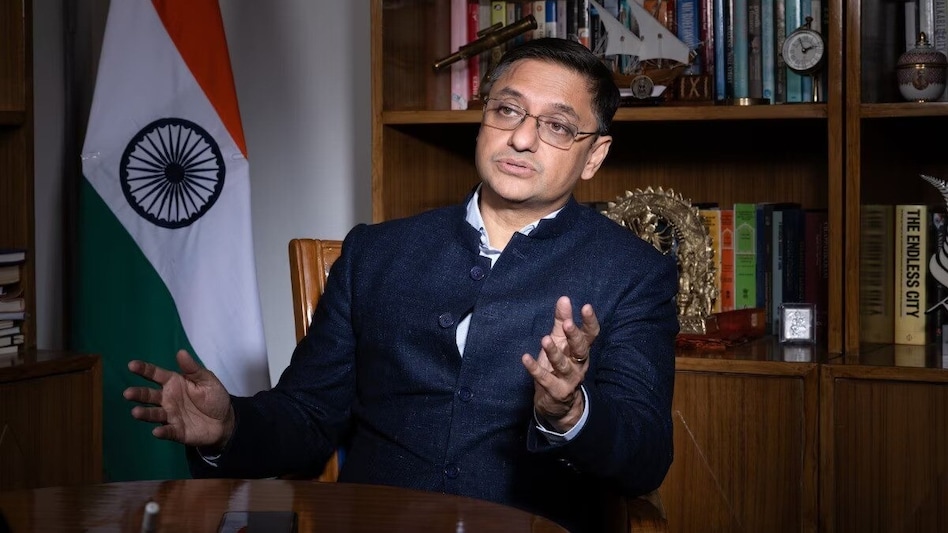 Sanjeev Sanyal, member of the Prime Minister's Economic Advisory Council
Sanjeev Sanyal, member of the Prime Minister's Economic Advisory Council
 Sanjeev Sanyal, member of the Prime Minister's Economic Advisory Council
Sanjeev Sanyal, member of the Prime Minister's Economic Advisory CouncilIndia is not the youngest country in the world and the effects of demographic decline are already visible, economist Sanjeev Sanyal has warned. "We keep fooling ourselves saying - 'We are the youngest country in the world'. First of all, we are not the youngest country in the world," Sanyal said during a podcast conversation with historian Hindol Sengupta. "There are countries in Africa, there is Pakistan, there is Philippines - which is younger than us. Secondly, even though we are younger than the West or East Asia, we too are aging and we need to begin to think in those terms."
Sanyal, who began raising concerns about collapsing fertility rates two decades ago, said the alarmist projections of endless population growth were flawed even back then. "I began talking about this demographic issue some almost 20 years ago making the point that this alarmist Malthusian thinking that the UN and others were pushing that human population would keep growing past 2100...is wrong,” he said.
He pointed to declining fertility rates in developed countries such as Japan and South Korea, and noted the same trend has now set in across large parts of India. "For India as a whole, the total fertility rate, i.e. the number of children per woman, is down now to 1.9, and the only reason it is at 1.9 and not lower is because of UP and Bihar."
"Large parts of southern India but also other parts of India, say for example the state of West Bengal, are now somewhere in the 1.6 range. Urban Bengal is 1.2," Sanyal, who is also a member of the Prime Minister's Economic Advisory Council, said.
"At this rate, the Bengali Bhadralok will go extinct. Because if you combine this birth rate and out-migration from Kolkata to other states and other parts of the world, the Bengali Bhadralok will go extinct. These are statistical points, it's not even an opinion," the economist added.
Sanyal also challenged the belief that India's cities are overcrowded because of population growth. "First of all, please separate your urban management problem from the demographic problem. We have this impression that our cities are overcrowded. No, they are badly managed,” he said, comparing Mumbai to denser but better-managed cities like Singapore, Hong Kong and Tokyo.
"In just the last 10 years, the traffic situation in southern Mumbai has improved. Has this been because of out-movement of people? No. In fact, there are more high-rises in Worli today which you can see from the sea-link than there were 20 years ago. But the traffic has improved. Why? Because you have better infrastructure. So the problem is infrastructure building, it is not a crowding problem."
Sanyal warned that once fertility falls below replacement levels, population decline becomes "very difficult to reverse." He said, "Let's say China today — it's already gotten rid of the one-child policy. Once society changes and you have a generation who's born up without having siblings, the social structure that keeps a higher birth rate simply goes away. In China, their birth rates kept falling. And even if they succeed in reversing this, the benefits will not show up for another 25 years."
He also highlighted the risks of regional imbalances in India's population trends. "You'll have parts of the country, for example - the South, which will have huge shortages of people. Now either they give up on growing, or they decide to import people. When people are imported, where do they come from? The places where they have more children — which is UP and Bihar. Then you will complain about language, culture, all kinds of things."
The economist cited the case of Kerala, where empty bungalows and a shrinking local population are already becoming visible. "If you just go through major towns in Kerala — take Thrissur, for example. Thrissur is the financial and intellectual capital of Kerala. Now you go there — there are beautiful bungalows, a lot of them belonging to wealthy families, particularly Syrian Christian families and others as well. Now irrespective of which community they are from, they have lovely bungalows. All of them live in Dubai or Abu Dhabi or now their children have moved to the West. At best, those bungalows have a few aging grandparents. Now after this, they're going to be just empty,” Sanyal said.
The same trends, he said, are also visible in parts of the North. "In Himachal, one major problem is you don't have enough children. You have a large number of schools that do not have a minimum quantum of children to keep those schools running." He concluded, "Reproductively speaking, we are no longer reproducing ourselves. The number of children peaked 10 to 15 years ago. So this is an obvious point and I am amazed that I have to debate it."